Saintpaulia “African violet” Complete Care Guide
Do you like the spring and seeing the flowers bloom? Thanks to the African violet it will be spring in your home all year round.
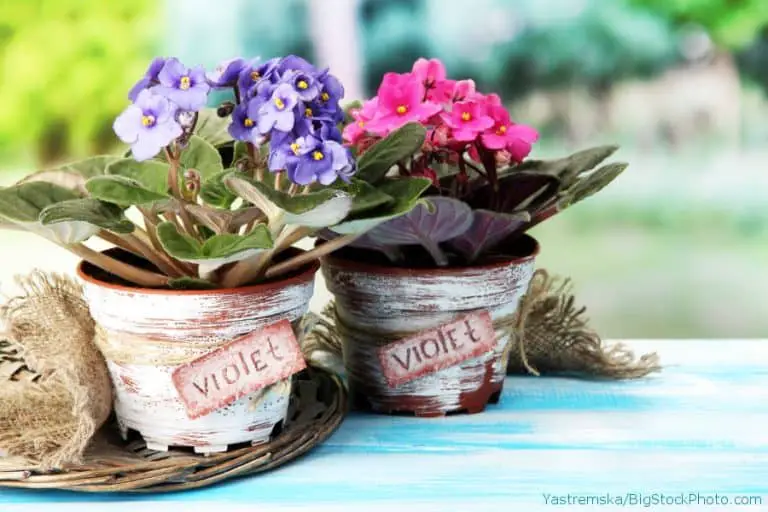
Light
Saintpaulia needs plenty of light to bloom nicely. This is the most important thing to remember. On short winter days the windowsill of a south facing window will be the best place for it, in summer a well lit east or west facing one will be appropriate.
If you are not able to guarantee enough sunlight for the plant, try to use artificial light.
Watering and fertilizing
The soil the African violet grows in should be neither too wet nor too dry. A soggy substratum can cause the roots to rot and the plant itself to wilt, one which is too dry can make the leaves dry out and the plant stop blooming. Here I would like to add that having dry soil in the pot for a few days does not usually threaten the African violet with anything. Problems can arise if this period is longer or happens frequently (especially in summer).
Before every watering check to see whether the soil has dried out a little. If so, water the plant. Be careful not to pour water on the leaves, because they are quite sensitive and pouring water on them can cause them to rot. Pour out any excess water that has drained into the saucer after about 30 minutes.
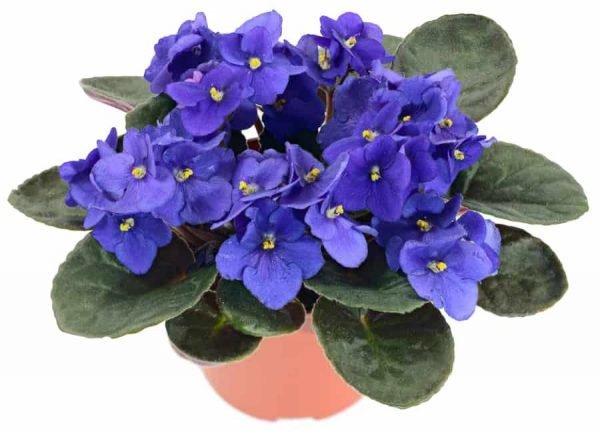
Fertilising the African violet with a bloom fertiliser has a good effect on its blooming, especially in the period of faster growth (summer). Add a fertiliser rich in phosphorus (ideally with an NPK (nitrogen, phosphorus, potassium) proportion of 10-30-20) to the water which you use to water the plant every 2 weeks. You can also try to use fertiliser spikes for blooming plants – you will find them in any bigger gardening store.
To make the African violet bloom more abundantly, it is worth allowing it a period of a few weeks’ rest every couple of months. In a period like this the plant should be watered less frequently and should be placed in a cooler and less well-lit place. After this rest, saintpaulia should start to form many new flower buds.
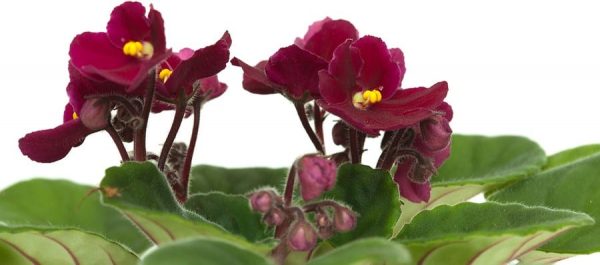
Air humidity
African violets (like most tropical plants) like a high level of air humidity. However, some sources suggest one should not increase it by sprinkling the plant directly, because this can cause its leaves to rot.
To avoid this, try to supply saintpaulia with greater air humidity in a different way. Place it alongside other plants, put the pot on pebbles partially immersed in water or use an air humidifier. Using clay pots can also make the air humidity around them greater. Pots like these allow the water used to water the plant evaporate more freely.
Temperature
Saintpaulia is quite sensitive to the cold, it should not be grown in temperatures below 15°C (59°F). Be careful with this if you are planning to bring the plant home from a shop in winter.
Re-potting and splitting; soil types
The african violet blooms significantly better if grown in a slightly tight pot. In a wider pot, the plant’s energy would be deployed towards the development of a larger root system and more leaves. For this reason, re-potting a violet to a bigger pot rarely makes sense (maybe only at the beginning, a few months after propagating the plant).
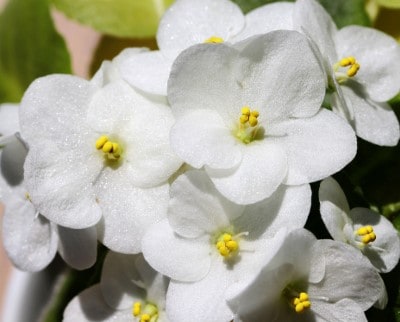
It does make sense, however, to divide a plant into a few smaller specimens if new suckers show up. Separated plants will distinguish themselves by blooming much better than a lush specimen left in one piece.
If you want to split a plant into a few smaller ones, take it out of the pot, divide the root cluster between the plant and a sucker (or just cut off the sucker) and place both parts of the plant in separate pots. Try to do it gently, because the leaves of the African violet are extremely fragile and one can break them easily.
Saintpaulia will thrive in a potting soil for flowering plants which you will be able to buy in any gardening centre. A potting mix for green plants should by and large also be sufficient. Remember to guarantee proper drainage (expanded clay pebbles) at the bottom of the pot before placing the violet in it.
Diseases / Pests
None of my African violets have ever been infested by pests. Some sources say, however, that Saintpaulia can become a target for cyclamen mites or mealybugs.
The aforementioned rotting of roots when over watered or damage to leaves when wet can also prove to be a problem.
Propagation
The easiest way to propagate Saintpaulia is by using a leaf with a stalk (petiole). Choose a healthy leaf and tear it together with its petiole off the plant. After that place the stalk into the soil in a small pot (e.g. 7 cm (3 in) in diameter) and make sure the soil is still moist. After a few weeks new little leaves will start to grow out beside the leaf which was planted. After about 5-6 months the plant will be big enough and will start to bloom.
You will find a lot of general information about the care of potted flowers in the post “The basics of house plant care”.
Appearance
Saintpaulia is a small plant with green leaves (about 5 cm (2 in)) that form a rosette that is 15 cm (6 in) in diameter. Small flowers (about 2-3 cm (1 in) in diameter) grow in the middle of the rosette every few weeks. The colour of the original variety is violet. However, nowadays varieties with flowers pink (many shades) and white in colour, uniform or with differently coloured edges, also exist.
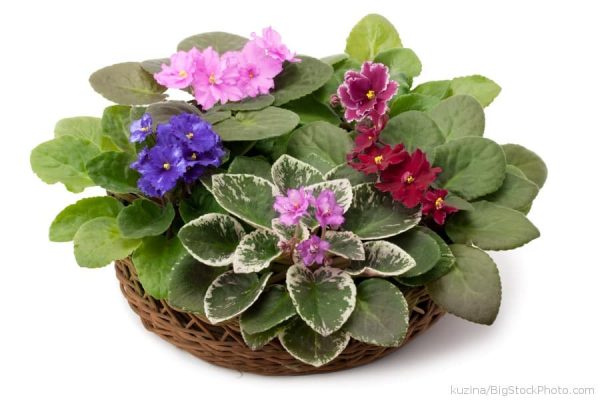
Origin
Saintpaulia ionantha comes from South Africa. It is named after Baron Walter von Saint Paul St Claire who discovered it at the end of the 19th century.
